Q&A: Pharmacies Optimize Inventory Management Through Teamwork | McKesson ideaShare
Thomas Sherrer, PharmD, advocates for a team-driven, tech-enhanced approach to pharmacy inventory management, boosting patient care and operational efficiency.
In an interview at McKesson ideaShare from July 10 to 13, 2025, in Nashville, Tennessee, Thomas Sherrer, PharmD, co-owner of Poole's Pharmacy, emphasizes a holistic approach that transforms inventory control from a mundane task into a strategic team effort. By involving all staff members and creating a shared understanding of goals, pharmacies can turn inventory management into an opportunity for enhanced patient care and operational efficiency. The strategy involves a delicate balance between leveraging technology—such as advanced software and potential AI tools—and maintaining a hands-on, vigilant approach to tracking stock, prices, and reimbursements. Moving from traditional handwritten logs to inventory systems bolstered by technology, Sherrer underscores the importance of constant monitoring, trusted wholesaler relationships, and a collaborative mindset. The ultimate objective is not just managing stock but creating a proactive pharmacy environment where team members take ownership of inventory and, by extension, patient satisfaction and safety.
Drug Topics®: What are the foundational strategies for effective inventory management in a community pharmacy, particularly when aiming to balance patient access with financial sustainability?
Thomas Sherrer, PharmD: I've actually had some discussions over the past few days. There's no real right answer, or I shouldn't say right answer. There's no real exact answer. Each pharmacy is different, but maintaining inventory is a major thing. One of the biggest things we talk about in our session, and I tell everybody, is it's a team sport. It's team effort. So in doing so, getting everybody involved, getting everybody to understand, not just 1 person, because I find, and we know in pharmacy, you come, and if you have all these ideas, and you're trying to push them, and everything else is going every which way that you don't get to accomplish everything. So involving the team, but then also getting them to understand your goals and where you want to go and what we're trying to get to, and then from that, the team takes care of the patient, and so people kind of take ownership of the inventory, but in doing so, they're kind of taking ownership of the patients for patient satisfaction, patient safety, things like that. So overall, getting everybody involved in getting their buy-in and understanding where you're going is probably the biggest and most effective thing with inventory.
Drug Topics: Considering the fluctuating nature of drug prices and supply chain issues, how can pharmacies best adapt their inventory strategies to mitigate these external pressures?
Sherrer: I mean, one of the big things is getting a good wholesaler or wholesalers that you trust and know and understanding, but I would say you don't want to mitigate them too far because that's when you have something that gets out there that nobody's paying attention to, and the price wasn't updated, or where it came from, or what it was, and so you think, "Oh, we're doing fine on this patient. We're making money, we're getting there," and then all of a sudden, you look and price hadn't been updated in a year or 2. So technology helps your software vendors and other programs like that can help, but I do think there's part of it—I'm a little bit old school. I like people to kind of see and feel and have inventory in their hands so that they know it came in, it didn't come in. What was the price? Did it change? Is it all so I don't kind of like the park and wait? I like to make sure that we're constantly looking and making sure that, because prices can move overnight on stuff. So by having that kind of mentality, and it's a team mentality, everybody's checking to make sure, and if something looks off, or reimbursements change, or things like that, you're going to try and figure out why it changed from one field to another. Did we change where we got it from? Can we change what is it so it's kind of always rolling. You don't want to mitigate it too much from there.
Drug Topics: How can data analytics and predictive modeling, powered by technology, be leveraged to make more informed inventory decisions and ultimately improve patient care?
Sherrer: Oh, this is huge. This is my point. Talked in a session the other day that I started years ago with a low-volume store with a handwritten report weekly of trying to manage and maintain it, and circling and starring and squaring and everything, had a little code every week and adding up this, that, and the other, and how to report. Since then, I've worked with a software vendor, and we'll say that was version 1.0 we're on version 5.0 if you will. That it is a kind of living, breathing document that changes, but we do perpetual inventory so we know what's on hand, what's in the store, and by doing so, we've leveraged our software vendor to see if we can get reports that tell us exactly what we need, and that's huge. I think one of the other steps would be seeing where AI is taking us. It's a little bit of a tricky one because you got to—if you're utilizing [or] you don't want to use—you got to be careful about patient data and patient safety, but having those tools around trying to see if you can't tweak them to get better and to get more exact.
Newsletter
Pharmacy practice is always changing. Stay ahead of the curve with the Drug Topics newsletter and get the latest drug information, industry trends, and patient care tips.






































































































































